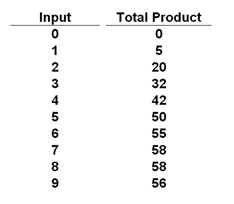If the average annual growth rate in real GDP for a nation during the last decade was 4 percent per year and the average annual population growth rate was 3 percent per year during the same period, then the average annual growth rate of per capita
GDP was
A) 1.00 percent. B) 1.33 percent. C) 0.75 percent. D) -1.00 percent.
A
You might also like to view...
The assertion that income accrues to people as a consequence of interactions among suppliers and demanders
A) amounts to an endorsement of the existing system. B) amounts to an endorsement of the pattern of income distribution. C) ignores the fact that the interactions are often unfair. D) offers a way of approaching the issue of income distribution.
Karl can produce either 10 tons of oranges or 5 tons of apples in a year, while Adam can produce either 5 tons of oranges or 10 tons of apples. If the exchange rate between apples and oranges in international markets is 1 ton of oranges per 3 tons of apples: a. Karl and Adam will not trade apples and oranges with one another, since both will specialize in and export oranges to other
countries. b. Karl and Adam will not trade apples and oranges with one another, since both will specialize in and export apples to other countries. c. Karl and Adam will trade apples and oranges with one another. d. Karl and Adam will not specialize or engage in international trade.
Which of the following is a recent trend observed in retirement plans in the United States?
A. More employer retirement plans are beginning to switch from defined contribution plans to defined benefit plans. B. Participation in retirement plans is declining as workers begin to rely more on Social Security. C. Many companies have been switching from defined benefit plans to defined contribution plans. D. More Americans are opting out of Social Security because of the low rates of return compared to private alternatives.
Refer to the table below. There are negative marginal returns when the:
The question is based on the following table that provides information on the production of a product that requires one variable input.

A. Fifth unit of input is added
B. Sixth unit of input is added
C. Seventh unit of input is added
D. Ninth unit of input is added